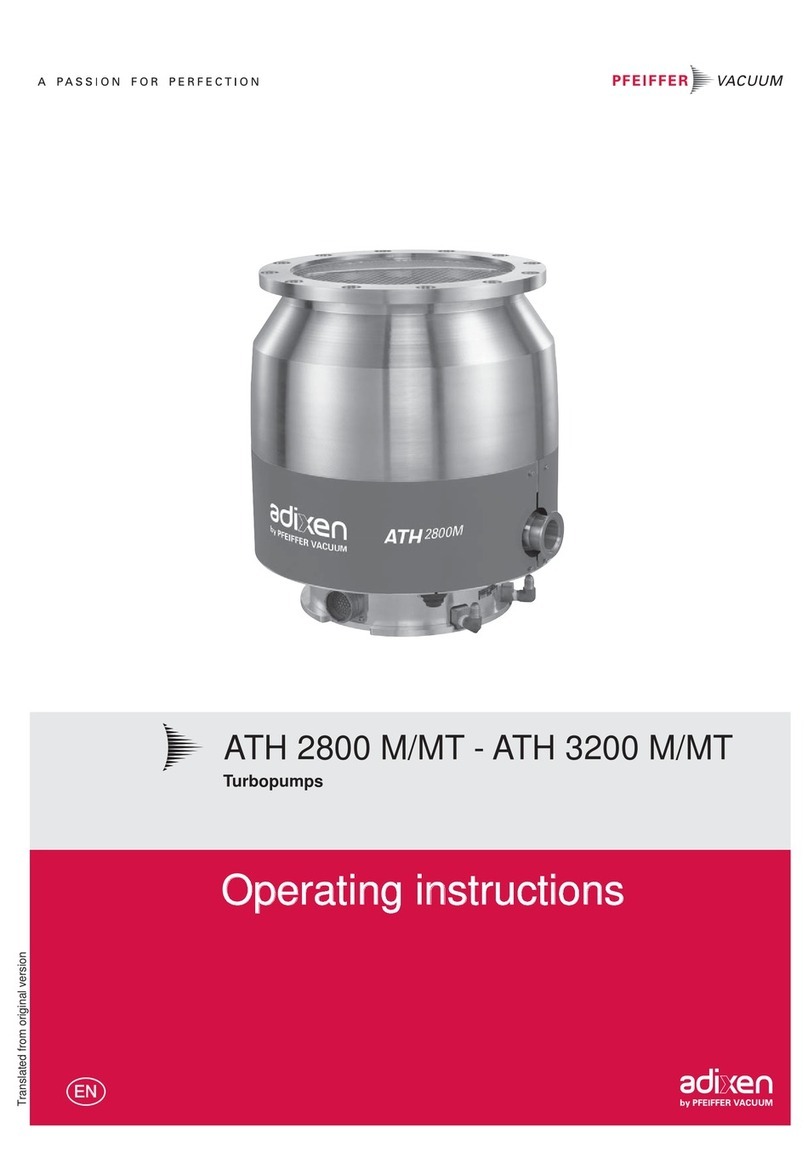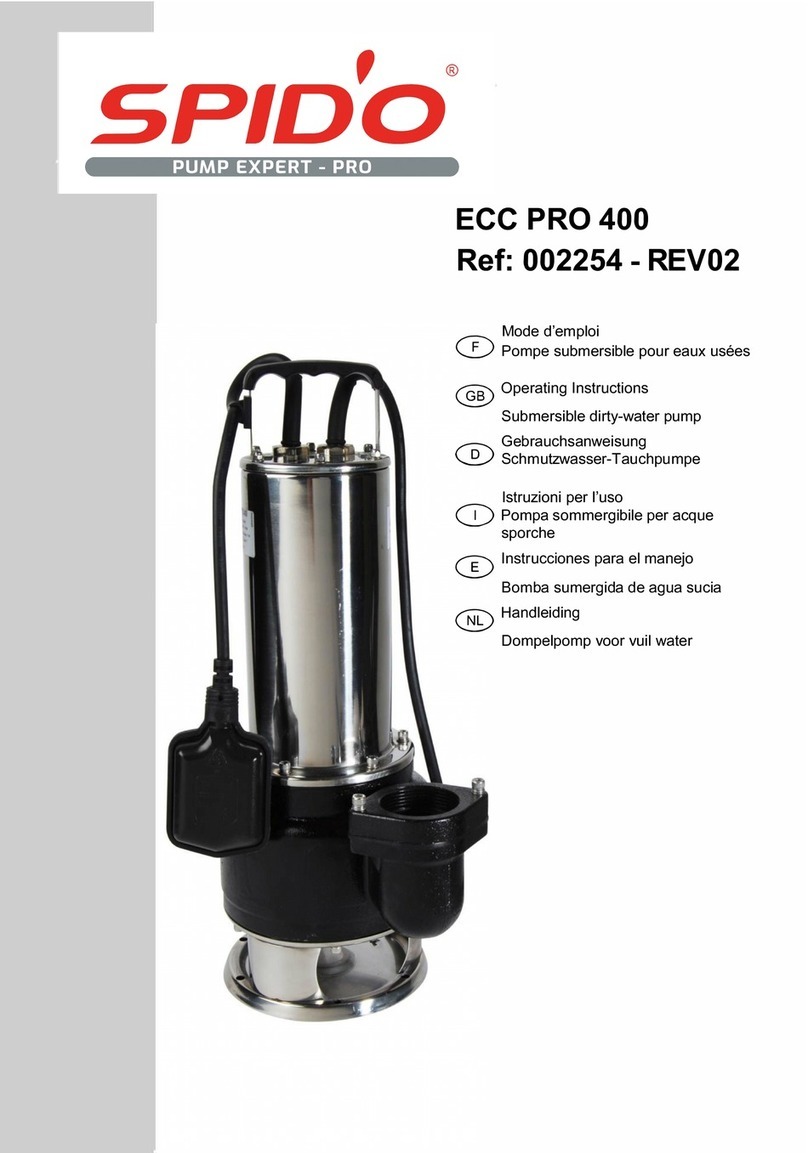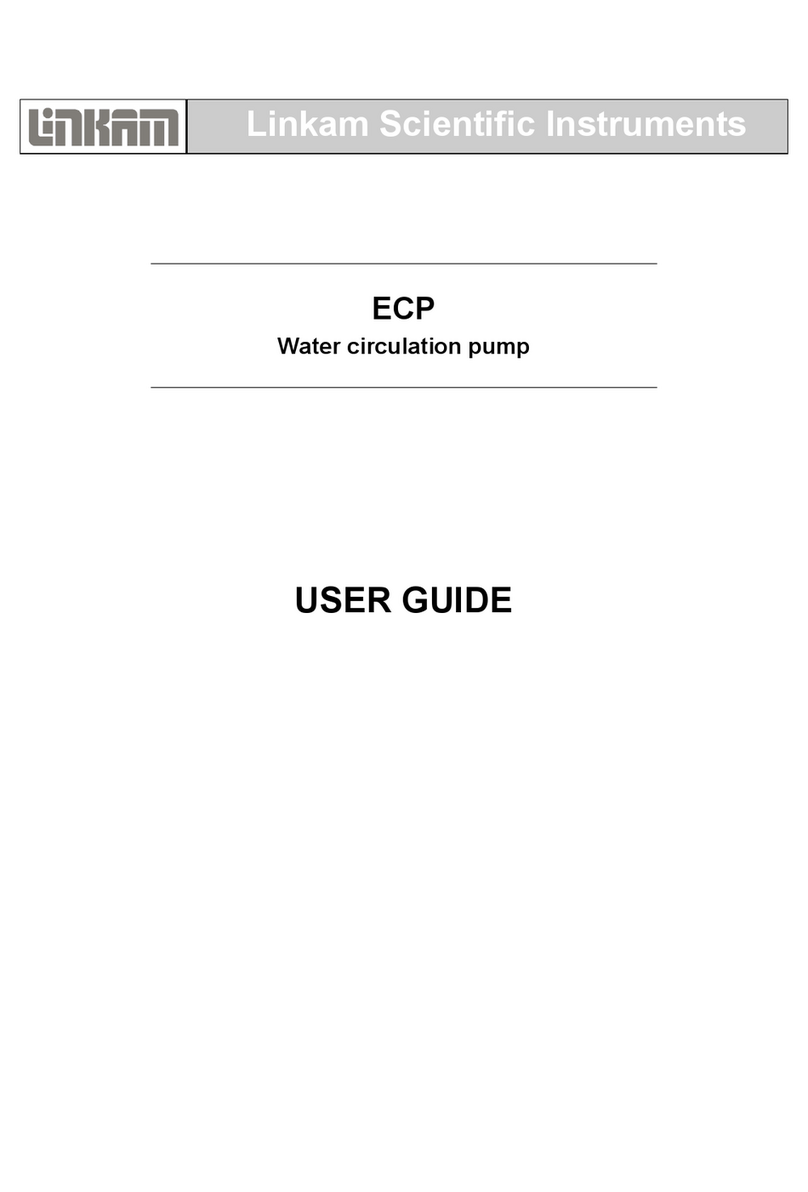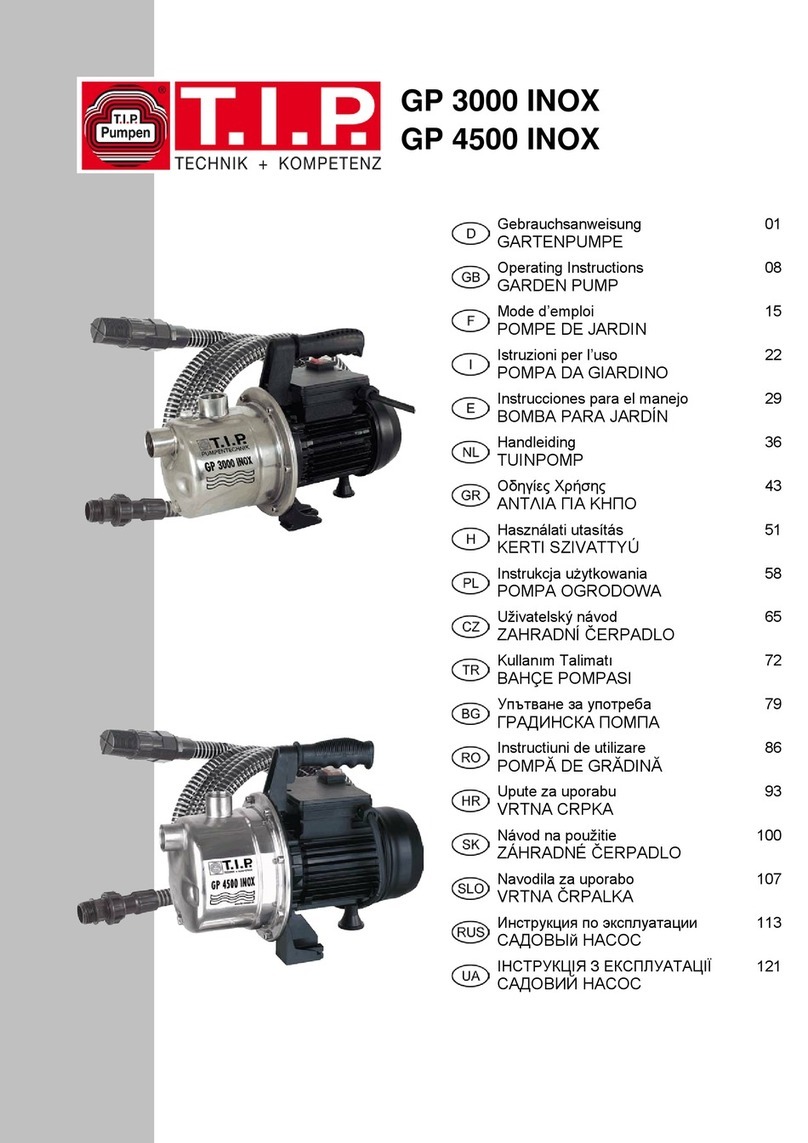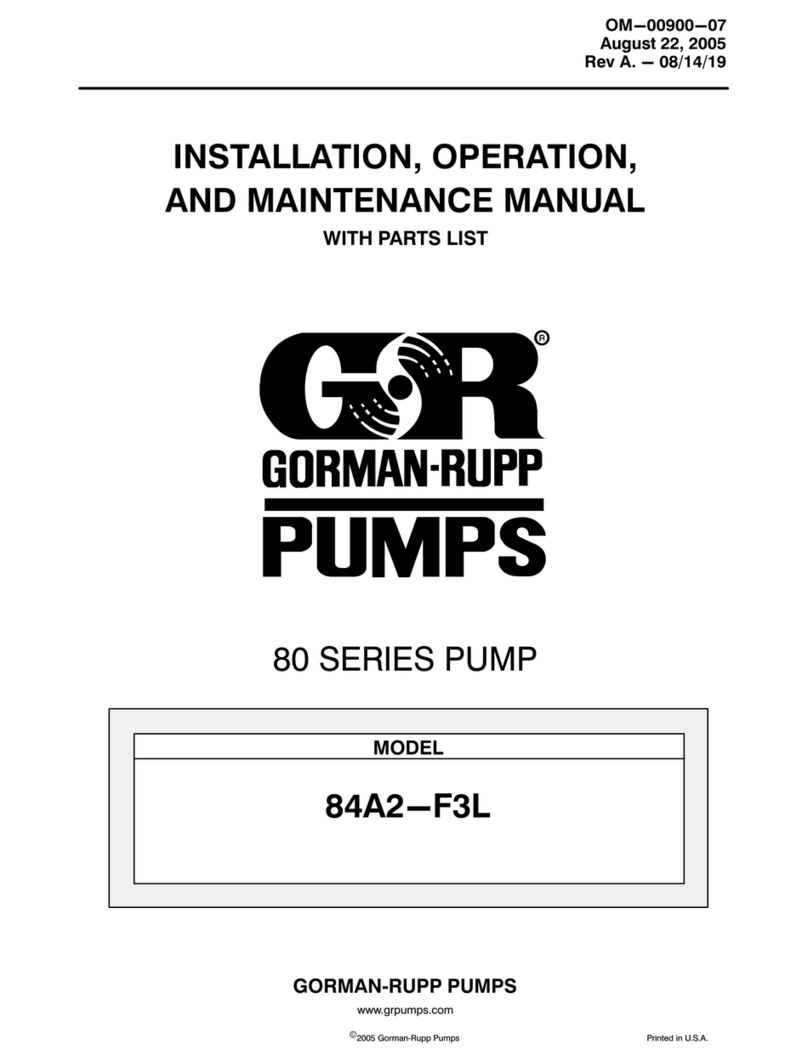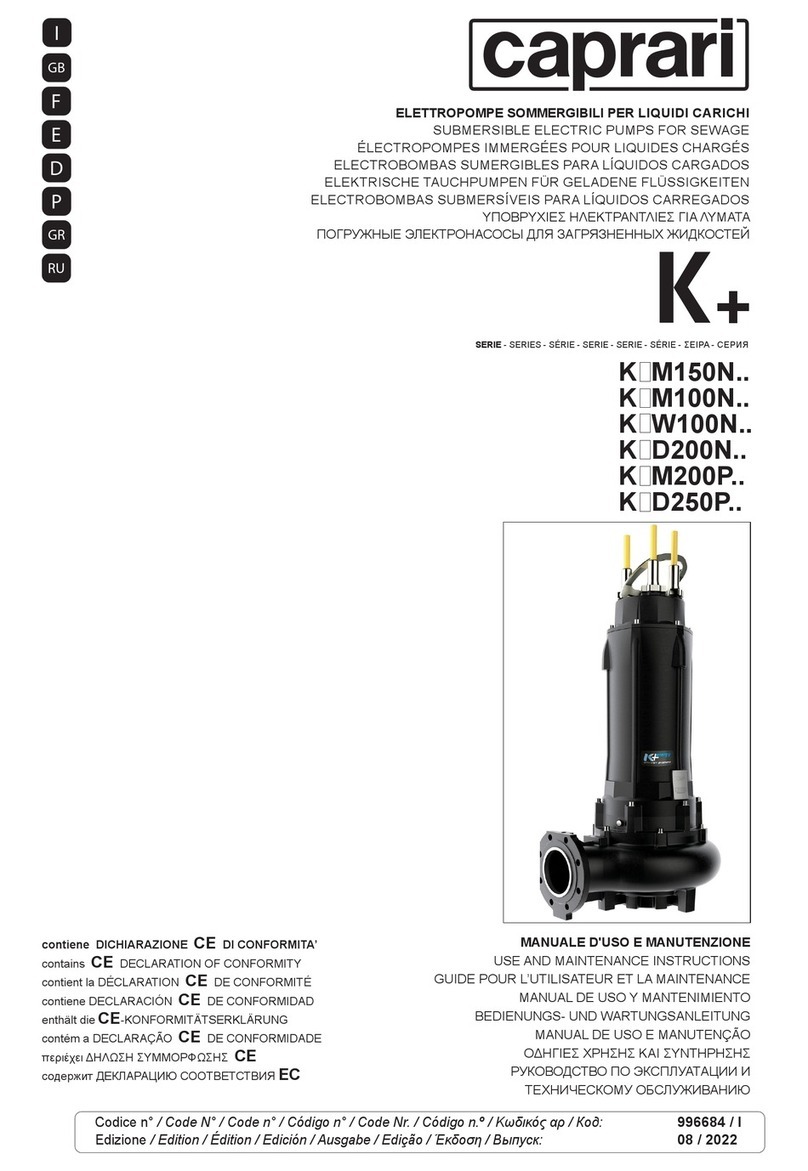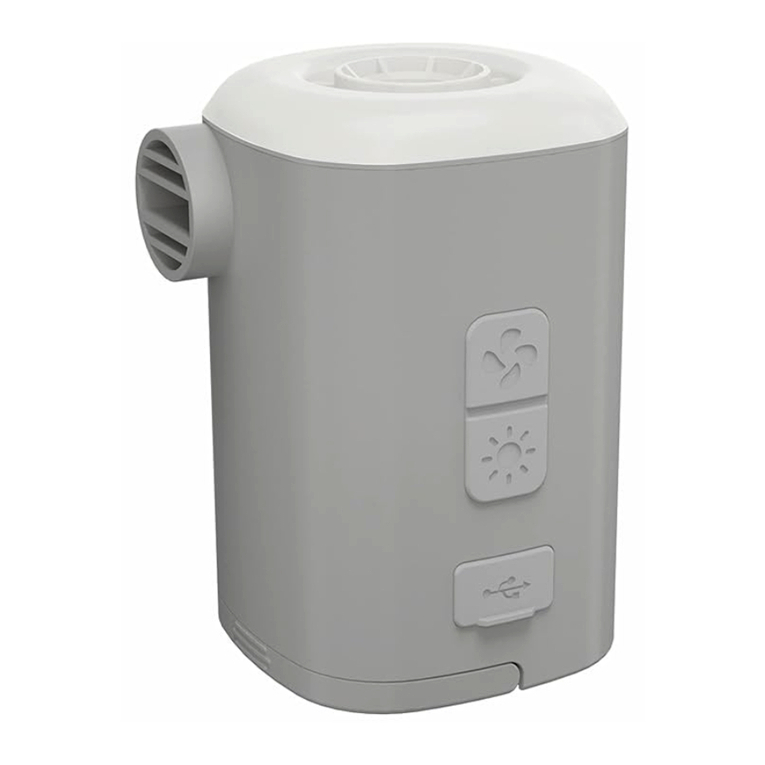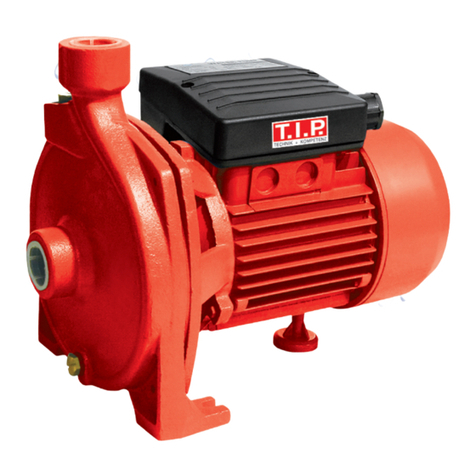2
Even with a carburetor
modification, the engine horse
power will decrease about 3.5%
for each 1,000 foot (300 meter)
increase in altitude. The effect
of the altitude on the
horsepower will be greater if no
carburetor modification is made.
NOTE: When the carburetor
has been modified for high
altitude operation, the air-fuel
mixture will be too lean for low
altitude use. Operation at
altitudes below 5,000 feet
(1,500 meters) with a modified
carburetor may cause the
engine to overheat and result in
serious engine damage. For
use at low altitudes, have a
qualified mechanic return the
carburetor to its original factory
specifications.
SAFETY INSTRUCTIONS
1) This pump is designed to
only pump water that is not
intended to be consumed by
humans. Using the pump for
other uses can result in injury to
the operator or damage to the
pump and other property.
Pumping flammable liquids (ex:
gasoline or fuel oils) can result
in a fire or explosion that can
cause serious injury. Pumping
sea water, beverages, acids,
chemical solutions or any other
liquid that promotes corrosion
can damage the pump.
2) Know how to stop the pump
quickly and understand how to
operate all of the controls.
Never permit anyone to operate
the pump without proper
instructions.
3) Do not allow children to
operate the pump. Keep children
and pets away from the
operation area.
4) Do not wear loose clothing or
jewelry. Pull back long hair. Keep
your hair, clothing and gloves
away from moving parts.
5) Do not operate the pump in
explosive atmospheres such as
in the presence of flammable
liquids, gases or dust. The
engine creates sparks which may
ignite the dust or fumes.
6) Gasoline is extremely
flammable and gasoline vapors
can explode. Refuel the pump
outdoors and in a well ventilated
area. If any fuel is spilled, ensure
the area is dry before starting the
pump.
7) The muffler becomes very hot
during operation and remains hot
for a while after the engine stops.
Be careful not to touch the
muffler while it is hot. Allow the
engine to cool before storing the
pump indoors.
8) To prevent fire hazards and
provide adequate ventilation,
keep the pump at least three feet
away from walls and other
equipment during operation. Do
not place flammable objects
close to the pump.
9) Exhaust gas contains
poisonous carbon monoxide.
Avoid the inhalation of exhaust
gas. Never run the pump in a
closed garage or confined area.
10) Do not overload the pump.
Use the correct pump for your
application. It will perform the job
better and safer at the rate for
which it was designed.
BEFORE OPERATION
1) Check the condition of the
pump and for signs of damage.
Look for leaks of oil or gas. Check
that all nuts, bolts, screws,
connectors and clamps are tight.
Remove any excessive dirt or
debris, especially around the
engine muffler and recoil starter.
2) Check the suction and
discharge hoses. Ensure the
hoses are in proper condition and
free of cracks and damage.
Check the sealing washer in the
suction hose is in working order.
Ensure the hose connectors and
clamps are securely installed.
Ensure the strainer is in good
condition and is installed on the
suction hose.
3) Check the engine oil level.
Running the engine with low oil
can cause damage. An oil sensor
will automatically stop the engine
before the oil level falls below a
safe limit. To avoid an
unexpected shutdown, always
check the level before startup.
4) Check the air filter. A dirty filter
will restrict the air flow to the
feedback@natitools.com











